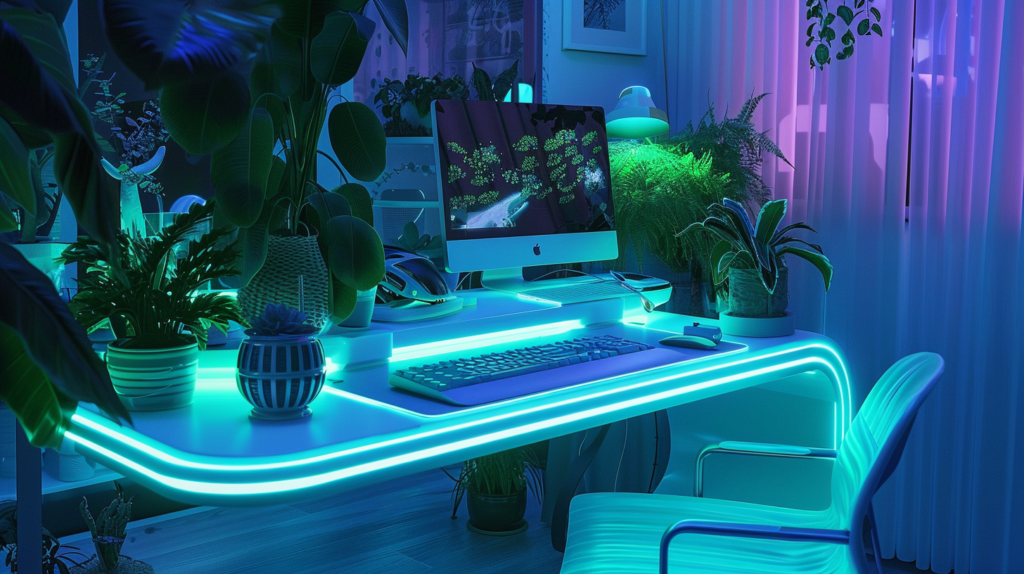
Quantum computing, ladies and gentlemen, is not just the latest buzzword to enter the tech world. It’s the heavy-lifter that’s here to revolutionize interface design. Yes, you heard it right – we’re entering the era of Quantum Computing Interface Design. But hold your breath, we aren’t talking about another neon-filled, cyberpunk-inspired design trend. We’re talking about a seismic shift in the way we perceive and interact with digital interfaces.
The very nature of quantum computing is, by its essence, in a superposition – a fancy term for saying it can be in multiple states at once. It’s as if Schrödinger’s cat decided to become a computer scientist and dove straight into interface design. But, what does this mean for the UX industry? This isn’t just a new tool in our design toolbox; it’s like an entirely new workshop.
However, let’s not get too ahead of ourselves. Quantum computing is still in its infancy. To put it into perspective, if traditional computing was a human, quantum computing would still be in its messy, drooling, occasionally cute but often confusing, infancy. It’s a fascinating field, filled with endless possibilities, but it’s also a tad bit complex. After all, it did take Einstein himself a fair amount of time to wrap his head around quantum theory.
On a more serious note, Quantum Computing Interface Design brings a radical shift in our traditional approach. Say goodbye to the linear, deterministic nature of classical computing. In the quantum world, it’s all about probabilities and superpositions. As designers, we have to factor in these new elements into our design thinking. This requires us to shift our mindset from designing for absolute outcomes to designing for relative possibilities.
It’s like playing a game of chess, where each move opens up a multitude of possibilities. Only now, we’re not just thinking two steps ahead, but possibly millions. The complexity is mind-boggling, yet utterly exciting. It’s like being given the keys to a playground where the rules of the game are still being written.
The user experience in Quantum Computing Interface Design is a whole different beast to tackle. We’re no longer just catering to users’ needs; we’re creating experiences that could potentially exist in multiple states at the same time. Imagine a UI that adapts and evolves in real-time based on the user’s actions. It’s not just reactive; it’s pre-emptively proactive.
But, with great power comes great responsibility. This level of adaptability could lead to interfaces that are so personalized and dynamic that they risk being disorienting or overwhelming. The challenge lies in creating interfaces that are intuitive yet flexible, familiar yet surprising. It’s a delicate balance to strike, but isn’t that what makes our job exciting?
To the skeptics who are rolling their eyes at this point, I know what you’re thinking. “Sure, quantum computing sounds impressive, but isn’t this just another fad?” Believe me, I understand your reservations. The tech world is notorious for its hype cycles. But here’s the thing: Quantum Computing Interface Design isn’t just about jumping onto the latest trend. It’s about preparing for the future.
Now, before you start panicking about the impending doom of classical computing, take a deep breath. The transition to quantum won’t be sudden or drastic. It’s more likely to be gradual, with quantum and classical computing co-existing and complementing each other. As UX professionals, it’s our job to bridge the gap and create seamless experiences that leverage the strengths of both worlds.
So, there you have it – a sneak peek into the brave new world of Quantum Computing Interface Design. The quantum revolution is here, and it’s set to change the way we design, interact, and experience digital interfaces. But remember, it’s a journey, not a destination. As the saying goes, it’s not about the destination, it’s about the journey. So, buckle up, get your quantum thinking hats on, and let’s embrace the quantum revolution together. After all, who said quantum physics and design can’t mix?


